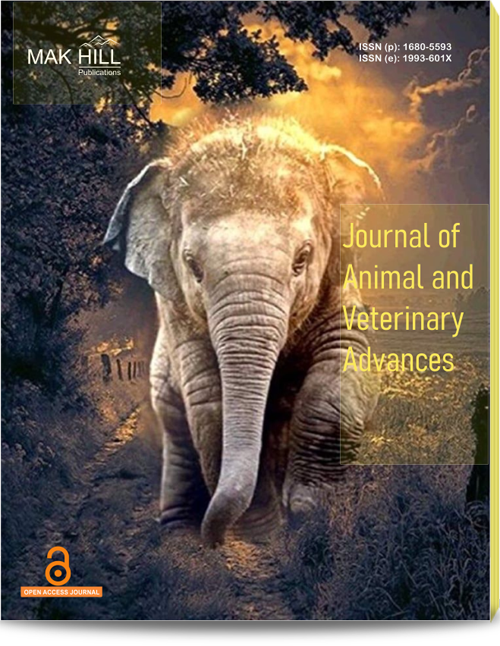
Journal of Animal and Veterinary Advances
ISSN: Online 1993-601XISSN: Print 1680-5593
Abstract
The objective of the study was to compare the reproductive performance of beef cows synchronized for oestrus or ovulation using Prostaglandin F2 alpha (PGF2?) alone or with gonadotropin-releasing hormone (GnRH). METHODS:Primiparous and multiparous beef cows (50 to 90 d postpartum; n=14) were assigned randomly to two treatment groups: 1) GnRH injection followed in 7 d by PGF2? injection then another GnRH injection 48 h later, and artificial insemination (AI) 24 h later the second GnRH injection (GnRH+PGF+GnRH group). 2) Injections of PGF2?, 11 d apart, AI only after detected estrus following first and second PGF2? injections or when all remaining cows were timed artificial insemination (TAI) at 72 and 96 h (2 x PGF group). The Estrus detection rate (GnRH+PGF+GnRH group vs 2 x PGF group; 14.3 vs 28.6 %; P>0.1), conception rate first insemination (GnRH+PGF+GnRH group vs 2 x PGF group; 85.7 vs 71.4 %; P>0.1) and pregnancy rate (GnRH+PGF+GnRH group vs 2 x PGF group; 71.4 vs 42.9;P>0.1) were not different between the two groups. The ovulation synchronization did not decrease the fertility of beef cows when compared with the estrus synchronization.
How to cite this article:
Faruk Aral , Mehmet ?olak and Seyit ?m?tl? . The Synchronization of Ovulation and Estrus in Beef Cows That were
Raised in Konya Animal Researh Intitue Using GnRH and PGF2a.
DOI: https://doi.org/10.36478/javaa.2004.534.537
URL: https://www.makhillpublications.co/view-article/1680-5593/javaa.2004.534.537